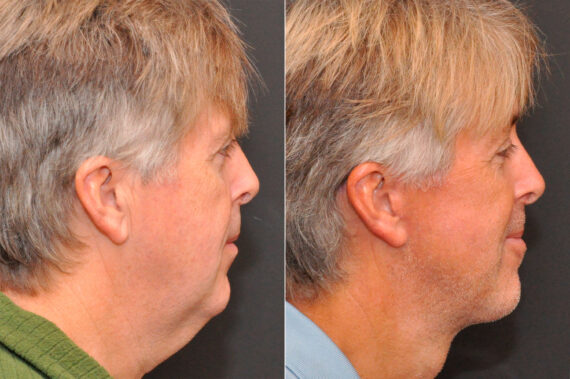Have you ever wondered what a facelift really costs—and why the numbers vary so much? You’re not alone. For many people exploring facial rejuvenation, understanding the financial side of things can be just as important as knowing the benefits of the facial procedure itself.
Whether you’re just starting your research or you’re almost ready to book a consultation, having a clear picture of facelift pricing can help you plan confidently. In this article, we’ll break down the typical costs, what’s included, and how to make sense of the wide price range.

How Much Does a Facelift Cost on Average?
Facelift costs can vary significantly depending on a number of factors, including location, surgeon experience, and the specific type of facelift performed. According to the American Society of Plastic Surgeons, the average cost of a facelift in the U.S. is around $11,395. However, RealSelf reports that prices can range anywhere from $5,600 to $50,000. This wide spread underscores the importance of understanding what affects pricing and what you’re actually paying for.
What Does the Facelift Cost Include?
While the total cost of a facelift can seem like a single number, it’s actually the sum of several individual components. Knowing what’s included in the price helps you avoid surprises and make accurate comparisons when consulting with different providers. Let’s break down the main elements that typically make up the overall cost of a facelift.
Facelift Consultation
The initial consultation is more than just a meet-and-greet—it’s a vital part of your facelift journey. During this appointment, the surgeon assesses your facial structure, listens to your goals, and outlines a personalized surgical plan. While some practices apply the consultation fee toward your procedure, others charge it separately, so it’s worth clarifying upfront.
Surgeon’s Fees
A significant portion of your facelift cost goes toward the surgeon’s fee, which reflects their skill, experience, and reputation. Board-certified specialists with extensive training and proven results may charge more, but with good reason. You’re paying for technical precision, artistic eye, and peace of mind, which directly influence your outcome and safety.
Anesthesia Fees
Administering anesthesia is a critical aspect of every surgical procedure, ensuring your comfort and safety throughout the procedure. These fees cover the anesthesiologist’s expertise, the type of anesthesia used, and any related monitoring. The total can vary based on the provider and the length of the surgery, but it’s a necessary part of the total cost.
Surgical Facility Fees
This part of the cost covers the use of the accredited operating room where your facelift takes place. It includes equipment, staff support, and post-operative care during your stay. Facilities that maintain higher safety standards and advanced technology may come with a higher fee, but they contribute significantly to a smooth and successful surgical experience.
Recovery Expenses
Post-surgical recovery can come with its own set of costs, including medications, follow-up visits, and specialized skincare products to support healing. Some patients also choose to take time off work or hire additional help during recovery, which adds to the overall investment. Planning for these expenses ahead of time ensures a smoother, stress-free healing process.
What Influences the Cost of a Facelift?
Several key factors can affect how much you’ll pay for a facelift, and understanding these variables can help you better anticipate your investment. From the complexity of your procedure to the experience of your surgeon, each element plays a role in shaping the final price. Below, we explore the most common cost influencers.
Surgery’s Complexity
No two facelifts are exactly alike—some require more extensive work than others. The more complex the surgery, the more time and resources are needed, which can raise the cost. Factors like the degree of sagging, whether additional procedures are combined, and how much tissue repositioning is required all influence the overall price.
The Surgeon’s Expertise
A highly experienced and board-certified facial plastic surgeon often charges more, but with that comes greater precision, safety, and satisfaction. Surgeons who specialize in facelifts and have a proven track record may be in higher demand, and their fees typically reflect their level of training, patient outcomes, and recognition in the field.
The Geographical Location
Where you have your facelift done can make a noticeable difference in price. Urban centers and coastal regions—especially cities like New York or Los Angeles—tend to have higher rates due to increased demand and cost of living. In contrast, procedures in smaller cities or less competitive markets may be more affordable.
Having Financing Options
For many patients, financing makes facelift surgery more accessible. Some clinics offer flexible payment plans or work with third-party financing companies that allow you to spread out the cost over time. While financing doesn’t reduce the total price, it can ease the financial burden and make the investment feel more manageable.
Does Insurance Ever Cover Facelift Surgery?
In most cases, facelift surgery is considered a cosmetic procedure and is therefore not covered by insurance. Since it is typically performed to enhance appearance rather than address a medical necessity, patients should plan to pay out of pocket.
However, there may be rare exceptions. If a facelift is performed alongside reconstructive surgery following trauma or illness, or if there’s a functional medical reason involved, insurance might cover a portion of the costs. It’s essential to consult with both your surgeon and insurance provider for clarity.
Cost Comparison by Facelift Procedure Type
Not all facelifts are created equal—and neither are their price tags. The technique used can significantly influence the cost, based on how invasive the procedure is, how long it takes, and the level of expertise required. Understanding the differences between facelift types helps you weigh your options more clearly and plan your budget accordingly.
Traditional Facelift Cost
The traditional facelift procedure is often the most comprehensive option and generally comes with a higher price tag, averaging around $17,000. This technique addresses sagging skin, deep creases, and jowls by lifting and repositioning deeper facial tissues. Because of its complexity and long-lasting results, the traditional facelift typically involves longer surgical time and recovery, which contribute to its overall cost.
Deep Plane Facelift Cost
The deep plane facelift is known for its advanced technique and dramatic, natural-looking results. Because it involves repositioning deeper facial structures beneath the muscle layer, it demands a high level of surgical expertise and precision. With an average cost of around $22,000, this option is typically more expensive, but the long-lasting, refined outcomes can make it a worthwhile investment for the right candidate.
Mini Facelift Cost
Averaging around $10,000, the mini facelift is a less invasive alternative to the traditional approach, often appealing to younger patients or those with early signs of aging. It targets mild to moderate sagging in the lower face and jawline, with shorter surgical time and faster recovery than other surgical facelifts. While it’s more affordable, results may be subtler and not as long-lasting as more extensive techniques.
Thread Lift Cost
Thread lifts offer a non-surgical alternative to traditional facelifts, with an average cost of around $2,000. This technique uses temporary sutures to subtly lift the skin, making it ideal for those with mild sagging or who want a quick refresh without downtime. While less invasive and more affordable, results are temporary and generally less dramatic than surgical options.

Choosing Your Facelift Surgeon Matters
When it comes to facial plastic surgery, cost should never be the only consideration. A facelift is a complex, highly individualized procedure that demands experience, skill, and artistry. Choosing a qualified facial plastic surgeon ensures that your results are both natural and long-lasting and that your safety is always the top priority.
Dr. Alexander S. Donath is internationally recognized for his excellence in facial cosmetic surgery. With a reputation that draws patients from around the globe, he has presented his techniques at elite conferences in cities like Dubai, London, and Rio. As a Cincinnati native and multi-year “Top Doctor” honoree, Dr. Donath blends global expertise with a commitment to personalized care and expertise in several other facial procedures, including eyelid surgery, brow lift, rhinoplasty, neck lift, and rhytidectomy. Ready to explore your options? Call us today at 513-891-5438 or visit our contact page to schedule your consultation.


